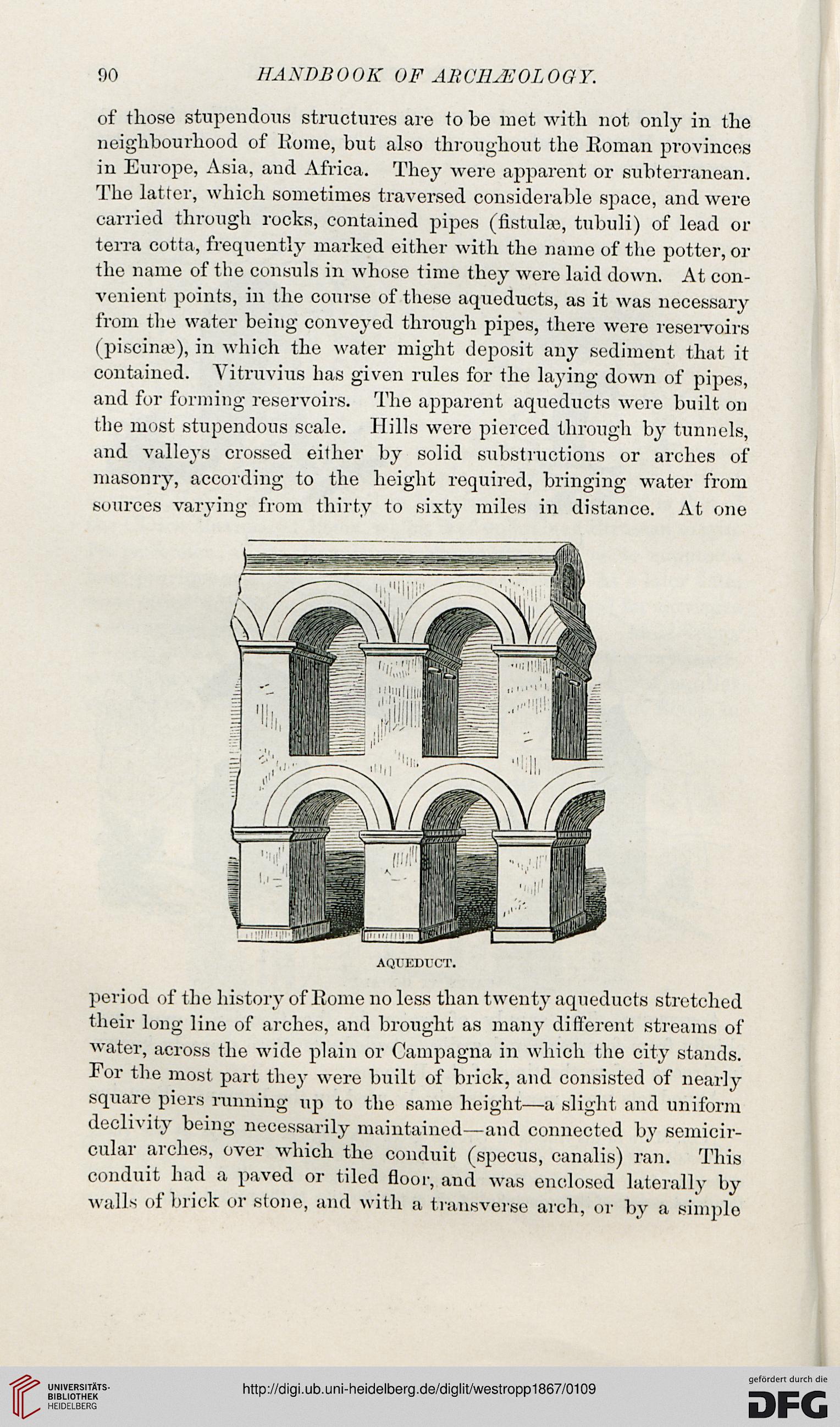90
HANDBOOK OF ABCEJEOLOGT.
of those stupendous structures are to be met with not only in the
neighbourhood of Rome, but also throughout the Roman provinces
in Europe, Asia, and Africa. They were apparent or subterranean.
The latter, which sometimes traversed considerable space, and were
carried through rocks, contained pipes (fistula;, tubuli) of lead or
terra cotta, frequently marked either with the name of the potter, or
the name of the consuls in whose time they were laid down. At con-
venient points, in the course of these aqueducts, as it was necessary
from the water being conveyed through pipes, there were reservoirs
(piscina;), in which the water might deposit any sediment that it
contained. Vitruvius has given rules for the laying down of pipes,
and for forming reservoirs. The apparent aqueducts were built on
the most stupendous scale. Hills were pierced through by tunnels,
and valleys crossed either by solid substructions or arches of
masonry, according to the height required, bringing water from
sources varying from thirty to sixty miles in distance. At one
AQl'EDUCT.
period of the history of Rome no less than twenty aqueducts stretched
their long line of arches, and brought as many different streams of
water, across the wide plain or Campagna in which the city stands.
For the most part they were built of brick, and consisted of nearly
square piers running up to the same height—a slight and uniform
declivity being necessarily maintained—and connected by semicii'-
cular arches, over which the conduit (specus, canalis) ran. This
conduit had a paved or tiled floor, and was enclosed laterally by
walls of brick or stone, and with a transverse arch, or by a simple
HANDBOOK OF ABCEJEOLOGT.
of those stupendous structures are to be met with not only in the
neighbourhood of Rome, but also throughout the Roman provinces
in Europe, Asia, and Africa. They were apparent or subterranean.
The latter, which sometimes traversed considerable space, and were
carried through rocks, contained pipes (fistula;, tubuli) of lead or
terra cotta, frequently marked either with the name of the potter, or
the name of the consuls in whose time they were laid down. At con-
venient points, in the course of these aqueducts, as it was necessary
from the water being conveyed through pipes, there were reservoirs
(piscina;), in which the water might deposit any sediment that it
contained. Vitruvius has given rules for the laying down of pipes,
and for forming reservoirs. The apparent aqueducts were built on
the most stupendous scale. Hills were pierced through by tunnels,
and valleys crossed either by solid substructions or arches of
masonry, according to the height required, bringing water from
sources varying from thirty to sixty miles in distance. At one
AQl'EDUCT.
period of the history of Rome no less than twenty aqueducts stretched
their long line of arches, and brought as many different streams of
water, across the wide plain or Campagna in which the city stands.
For the most part they were built of brick, and consisted of nearly
square piers running up to the same height—a slight and uniform
declivity being necessarily maintained—and connected by semicii'-
cular arches, over which the conduit (specus, canalis) ran. This
conduit had a paved or tiled floor, and was enclosed laterally by
walls of brick or stone, and with a transverse arch, or by a simple




